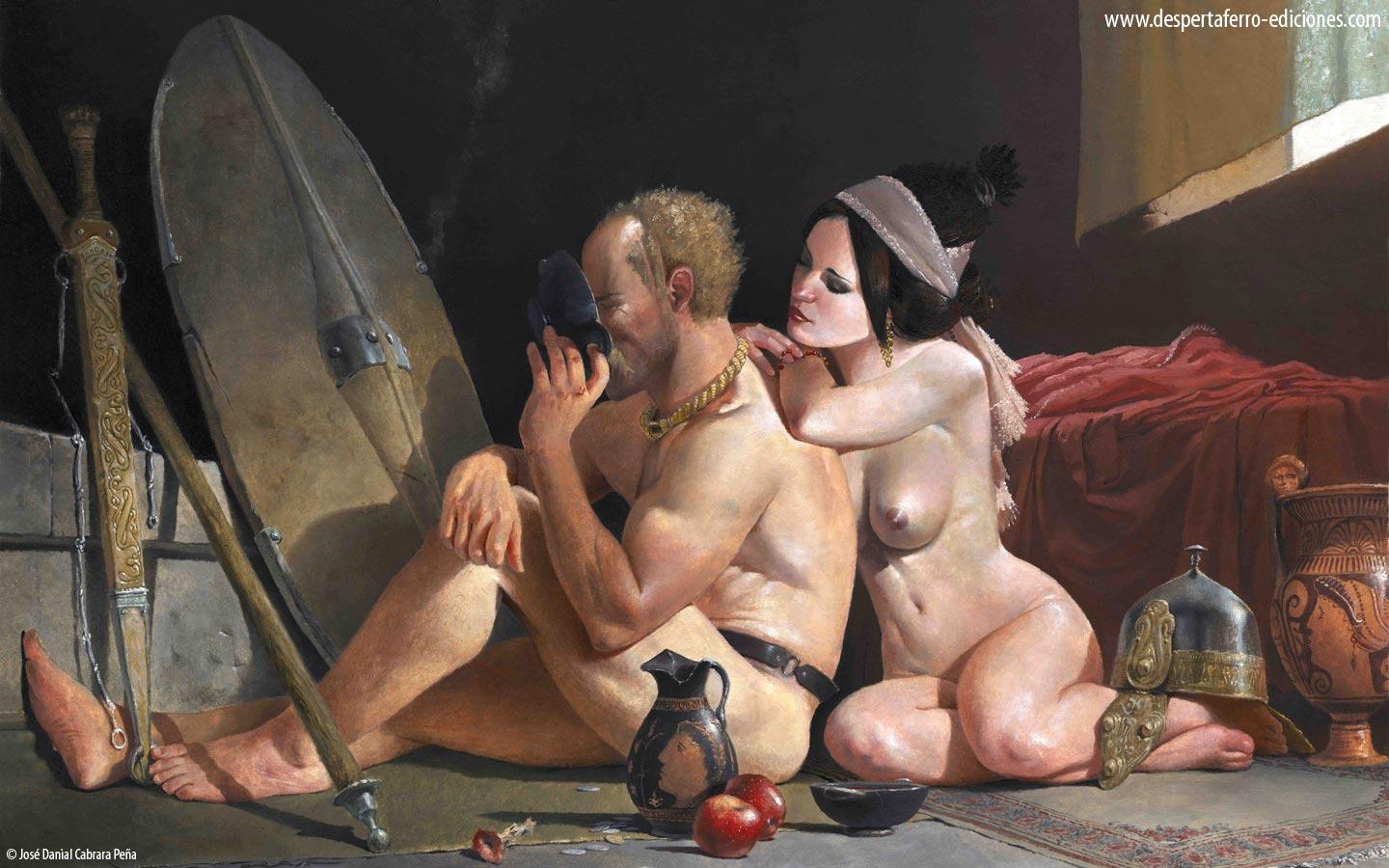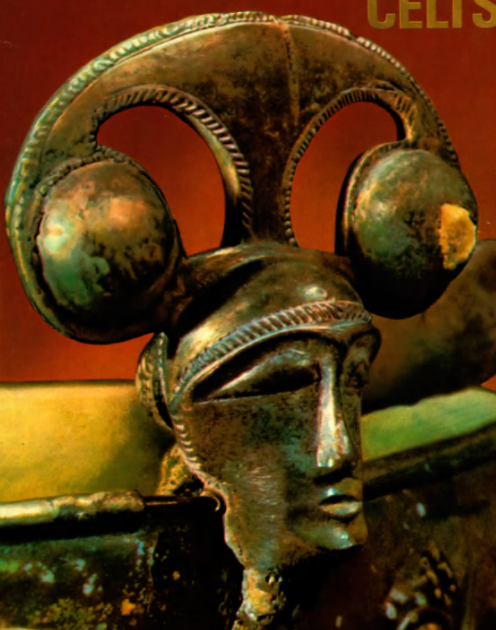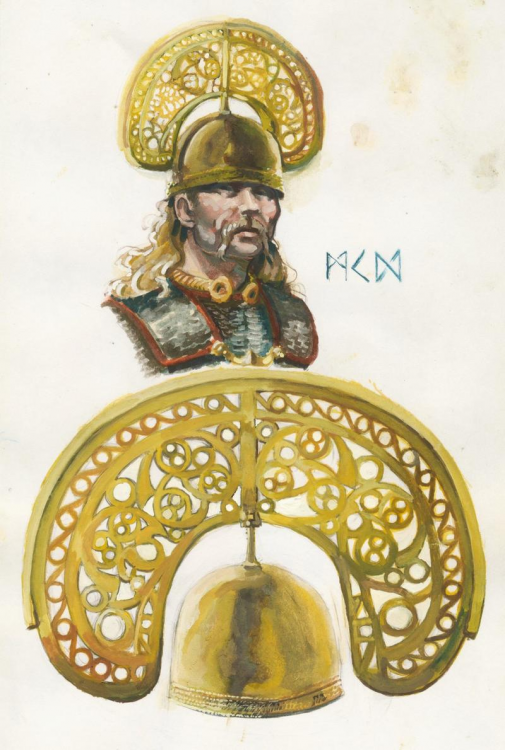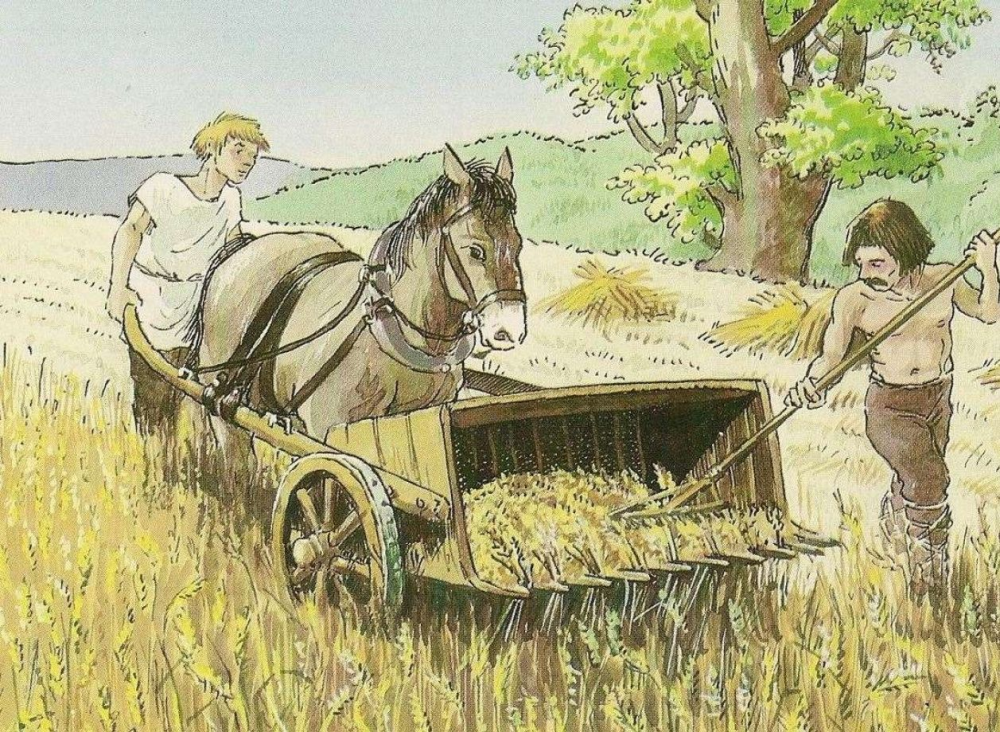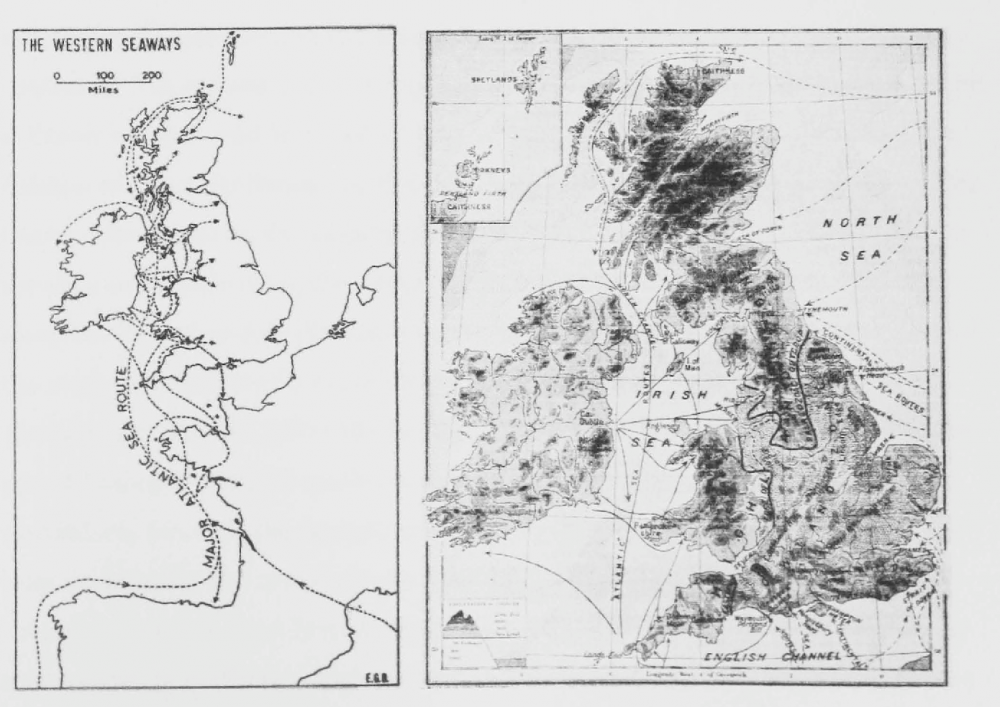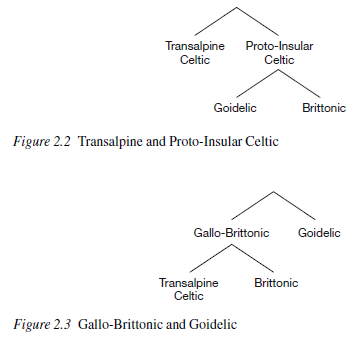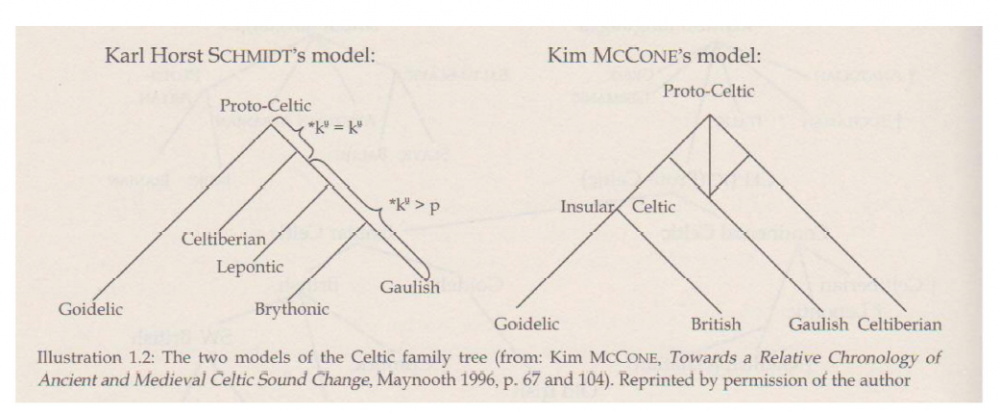-
Posts
2.401 -
Joined
-
Last visited
-
Days Won
83
Everything posted by Genava55
-
.thumb.jpg.b21ca1d0c15fb56b42c39b25a0a40815.jpg)
Specific Name Review: Units
Genava55 replied to Doktoreus's topic in Game Development & Technical Discussion
Your welcome. I will remove the brackets by editing my message. Ok thanks for the info. One question, about the Catafalque, do you want a name for the thing in Gaulish? I will do something similar for future proposals, no problemo. Because the differences are mostly imperceptible during this period. Especially by using only the nominative case. In these words no, it doesn't seem to have indication for longer vowel length. When it is the case, it is generally noted by the linguists. My bad, by "longboat" I wanted to designate something that looks like a "log canoe". Like the bronze age models found. Actually this is not really the literal meaning, Longos probably meant simply ship in this context. My interpretation for this root is to designate these kinds of boat. It was not the resemblance that made me said this. I simply wanted to designate these kinds of boat. Although the case of the word Longo- is quite complex and could also involved different meaning associated to the topography. -
.thumb.jpg.b21ca1d0c15fb56b42c39b25a0a40815.jpg)
Specific Name Review: Units
Genava55 replied to Doktoreus's topic in Game Development & Technical Discussion
Done. I edited my previous message. -
.thumb.jpg.b21ca1d0c15fb56b42c39b25a0a40815.jpg)
Specific Name Review: Units
Genava55 replied to Doktoreus's topic in Game Development & Technical Discussion
Basically the huge majority should be changed, the current names for the Celtic units are mostly based on modern Celtic languages (for example modern Welsh). I made a list of names from my various proposals based on ancient Gaulish or old Celtic languages. Here a summary: Cingetos. Designate a member of the warrior class, litt. "those-who-walk-in-front". Catucos. Meaning combatant, from the root Catu-, fight. Batoros. Meaning "who-hit-hard" or "who-knocks", a fighter. Ambactos. Meaning "who-is-around", a satellite companion, a client or a servant. Not necessarily a low status since the word evolved in ambassador. Eporedos. Meaning a cavalryman or a knight. High-member of the warrior-class. Epossos. Meaning a cavalryman or a knight. High-member of the warrior-class. Marcacos. Meaning a cavalryman. The word Marcos is a synonym of Epos for the horse but could be used for a different type. Bagauda. Meaning combatant or bellicose, associated with rural revolts and brigands during the Roman Empire. Selgos. Meaning hunter. Telmiuicos. Meaning slinger from a reconstruction based on Telmi- for the sling and Uicos for victorious, which gives litt. "victorious-by-the-sling". Talmoris. From the Old Breton Talmorion equivalent of the Latin funditoribus, a dative plural word for Slinger. Bariogaisatos. Meaning "furious spearman", from the word Bario- (angry, furor) and the word Gaisa- (spear). Adretos. Meaning "who-runs-fast", an attacker. Comaterecos. Meaning patrician or senator. Agrocuna. Meaning war-dog or battle-dog. From Agro- (battle) in Gaulish and Cuna (Dog) in Primitive Irish. Epouanos. Meaning litt. "horse-killer". Soliduros. Attested word for the bodyguard of the Sotiates' King. Adscoros. Meaning attendant or retainer. Uerouicos. Meaning victorious warrior, great fighter, litt. "very-victorious". Uassos. Meaning servant or serf. Talanos. Meaning support or supportive person. Excingos. A attacker or a warrior, litt. "who-get-out-to-fight". Namantobogios. Meaning "smasher of enemies". Essedon. Attested word for the chariot in general. Used in the context of war chariot by the Romans. Argos. Meaning champion or noble. Caur. Old Irish for champion, same logic than in the Gaulish Cauaros, another word for champion. Changelog for the current rosters. [file name] ; [specific name i.e. native language] ; [generic name i.e. English equivalent in game] ; [literal meaning for future reference] ; [used language] brit_catafalque.xml ; Cassiuellaunos ; Catafalque ; Passionated Leader ; Gaulish brit_cavalry_javelinist_b.xml ; Marcacos ; Raiding Cavalry ; Horseman ; Gaulish brit_cavalry_swordsman_b.xml ; Eporedos ; Celtic Cavalry ; Cavalryman ; Gaulish brit_champion_cavalry.xml ; Essedon ; Celtic Chariot ; Chariot ; Gaulish brit_champion_infantry.xml ; Argos ; Celtic Champion ; Champion ; Gaulish brit_hero_boudicca.xml ; Boudica ; Hero Charioteer ; Victorious ; Gaulish brit_hero_caratacos.xml ; Caratacos ; Hero Swordsman ; Beloved ; Gaulish brit_hero_cunobelin.xml ; Cunobelinos ; Hero Cavalry Swordsman ; Strong as a Dog ; Gaulish brit_infantry_javelinist_b.xml ; Adretos ; Skirmisher ; Who-runs-fast ; Gaulish brit_infantry_slinger_b.xml ; Talmoris ; Celtic Slinger ; Slinger ; Old Breton brit_infantry_spearman_b.xml ; Catucos ; Celtic Spearman ; Combatant ; Gaulish brit_ship_fishing.xml ; Longos ; Fishing Boat ; Long Boat ; Gaulish brit_ship_merchant.xml ; Nauson ; Merchantman ; Ship ; Gaulish brit_ship_trireme.xml ; Pontos ; Medium Warship ; Ship ; Gaulish brit_siege_ram.xml ; Molton ; Battering Ram ; Ram ; Gaulish brit_support_female_citizen.xml ; Bena ; Celtic Woman ; Woman ; Gaulish brit_support_healer_b.xml ; Druid ; Healer ; Wise ; Gaulish brit_support_trader.xml ; Uogition ; Trader ; Carrier ; Gaulish brit_war_dog_b.xml ; Agrocuna ; War Dog ; Battle Dog ; Archaic Irish gaul_catafalque.xml ; Ambiorix ; Catafalque ; King in All Directions ; Gaulish gaul_cavalry_javelinist_b.xml ; Marcacos ; Raiding Cavalry ; Horseman ; Gaulish gaul_cavalry_swordsman_b.xml ; Eporedos ; Celtic Cavalry ; Cavalryman ; Gaulish gaul_champion_cavalry.xml ; Uerouicos ; Gallic Noble Cavalry ; Victorious Warrior ; Gaulish gaul_champion_fanatic.xml ; Bariogaisatos ; Naked Fanatic ; Furious Spearman ; Gaulish gaul_champion_infantry.xml ; Soliduros ; Celtic Champion ; Champion ; Gaulish gaul_hero_brennus.xml ; Brennos ; Hero Swordsman ; Commander ; Gaulish gaul_hero_vercingetorix.xml ; Uercingetorix ; Hero Cavalry Swordsman ; King of the Great Warriors ; Gaulish gaul_hero_viridomarus.xml ; Britomaros ; Hero Spearman ; With Great Discernment ; Gaulish gaul_infantry_javelinist_b.xml ; Adretos ; Skirmisher ; Who-runs-fast ; Gaulish gaul_infantry_slinger_b.xml ; Talmoris ; Celtic Slinger ; Slinger ; Old Breton gaul_infantry_spearman_b.xml ; Catucos ; Celtic Spearman ; Combatant ; Gaulish gaul_ship_fishing.xml ; Longos ; Fishing Boat ; Boat ; Gaulish gaul_ship_merchant.xml ; Nauson ; Merchantman ; Ship ; Gaulish gaul_ship_trireme.xml ; Pontos ; Medium Warship ; Ship ; Gaulish gaul_siege_ram.xml ; Molton ; Battering Ram ; Ram ; Gaulish gaul_support_female_citizen.xml ; Bena ; Celtic Woman ; Woman ; Gaulish gaul_support_healer_b.xml ; Druid ; Healer ; Wise ; Gaulish gaul_support_trader.xml ; Uogition ; Trader ; Carrier ; Gaulish -
I want to add new interesting informations about the Emishi:
-
https://www.facebook.com/samara.parcarcheologique/ Photos:
- 264 replies
-
- 3
-

-
- britons
- east celtic
-
(and 2 more)
Tagged with:
-
.thumb.jpg.b21ca1d0c15fb56b42c39b25a0a40815.jpg)
Translating Specific Names
Genava55 replied to Akira Kurosawa's topic in Game Development & Technical Discussion
Moreover, languages are borrowing differently the original names, sometimes adapting the word, sometimes not. Some stay the same like curriculum and curricula. Some stay basically the same like Samurai and Ninja. Although in Japanese they have the same form in plural than in singular, while in Western languages people have the tendency to made up a plural form. Others not, like hoplite (sing.) and hoplites (plu.) in French instead of hoplitēs (sing.) and hoplitai (plu.) in Greek. Or like legionary and legionaries in English, from Latin legionarius and legionarii. -
The defense of the Ynys Môn (Anglesey)! Tacitus account: The druid helmet from the illustration is based on the Aylesford bucket.
- 264 replies
-
- 1
-

-
- britons
- east celtic
-
(and 2 more)
Tagged with:
-
.thumb.jpg.b21ca1d0c15fb56b42c39b25a0a40815.jpg)
Translating Specific Names
Genava55 replied to Akira Kurosawa's topic in Game Development & Technical Discussion
This is the word "trader" in Welsh, it comes from cyfnewid, to trade. https://en.wiktionary.org/wiki/cyfnewid C is pronounced like a K. The Y is not on the final syllable so it is pronounced A like in the English "ago". -
.thumb.jpg.b21ca1d0c15fb56b42c39b25a0a40815.jpg)
Translating Specific Names
Genava55 replied to Akira Kurosawa's topic in Game Development & Technical Discussion
Gaulish pronunciation is quite a complicated topic because it is hard to know where is the stress. Moreover, I am far from being a linguist. But this can help, the explanations are quite good: In the case of Miletucerdon, one of my personal approximate craft, the stress should be in the -cer- part probably. It should be read MEE-LE-TOO-KER-DON. -
https://www.artstation.com/artwork/qAmrOa https://www.artstation.com/artwork/gJNNVG I love how he used this sword belt from Axel Guttman robbery collection. It really fits nicely to a Britonnic warrior! Edit: here is why I find this belt suits perfectly the Britonnic esthetic: https://www.ancient-origins.net/news-history-archaeology/celtic-chariot-0011046 https://balkancelts.wordpress.com/2019/06/29/celtic-chariots-and-chariot-elements-from-wales/
- 264 replies
-
- 1
-

-
- britons
- east celtic
-
(and 2 more)
Tagged with:
-
- 264 replies
-
- britons
- east celtic
-
(and 2 more)
Tagged with:
-
.thumb.jpg.b21ca1d0c15fb56b42c39b25a0a40815.jpg)
Roman Armies and Tactics: Roman Siegecraft
Genava55 replied to badosu's topic in Introductions & Off-Topic Discussion
-
.thumb.jpg.b21ca1d0c15fb56b42c39b25a0a40815.jpg)
Warcraft III Reforged
Genava55 replied to Lion.Kanzen's topic in Introductions & Off-Topic Discussion
Edit: actually I am not sure it was from the reforged edition. -
Carthaginian Mercenaries: Soldiers of Fortune,Allied Conscripts, and Multi-Ethnic Armies in Antiquity https://digitalcommons.wofford.edu/cgi/viewcontent.cgi?referer=https://scholar.google.ch/&httpsredir=1&article=1010&context=studentpubs Chapter 22 : Carthage and Numidia, 201–149 BC ; in A Companion to the Punic Wars https://onlinelibrary.wiley.com/doi/10.1002/9781444393712.ch22 Numidian Kings and Numidian Garrisons during the Second Punic War: Coins and History https://www.raco.cat/index.php/Potestas/article/download/301105/390561 How monetarized was Numidian society in Antiquity? https://s3.amazonaws.com/academia.edu.documents/58811955/Maria_Cristina_Nicolau_Kormikiari.pdf?response-content-disposition=inline%3B filename%3DHow_monetarized_was_Numidian_society_in.pdf&X-Amz-Algorithm=AWS4-HMAC-SHA256&X-Amz-Credential=AKIAIWOWYYGZ2Y53UL3A%2F20200120%2Fus-east-1%2Fs3%2Faws4_request&X-Amz-Date=20200120T195522Z&X-Amz-Expires=3600&X-Amz-SignedHeaders=host&X-Amz-Signature=e37007445be39f4b82d91100909daefa763cc2e42aee232134762320f05b99c8 La relación de Cartago con los Mauri del África Occidental (Marruecos) http://ojs.unica.it/index.php/caster/article/download/2478/2215 EL MUNDO INDÍGENA Y ROMA EN EL MARRUECOS ANTIGUO: LA RELIGIÓN DURANTE LOS PERÍODOS PRERROMANO Y ROMANO https://s3.amazonaws.com/academia.edu.documents/16868190/http___hera.ugr.es_tesisugr_15472954.PDF?response-content-disposition=inline%3B filename%3DEl_mundo_indigena_y_Roma_en_el_Marruecos.pdf&X-Amz-Algorithm=AWS4-HMAC-SHA256&X-Amz-Credential=AKIAIWOWYYGZ2Y53UL3A%2F20200120%2Fus-east-1%2Fs3%2Faws4_request&X-Amz-Date=20200120T200247Z&X-Amz-Expires=3600&X-Amz-SignedHeaders=host&X-Amz-Signature=a34f5080c71b3083b33b760db710e63fc1129cf19d1931944218a271fd023e50
-
https://www.deviantart.com/dewitteillustration/art/Reconstruction-of-North-Bersted-helmet-50BC-807452367
- 264 replies
-
- 1
-

-
- britons
- east celtic
-
(and 2 more)
Tagged with:
-
At least after the players would have played AoE4 for years, they won't be destabilized when they will see it implemented in 0AD.
-
- 264 replies
-
- 1
-

-
- britons
- east celtic
-
(and 2 more)
Tagged with:
-
There are arguments in favor like the fact that Gallic leaders could be druid. The irish mythology is full of characters with a mixed role as priest and warrior, often labelled by the two names. But for example during the attack on Ynys Môn, the druids do not seem to defend themselves. Moreover druids were exempt of military service, so probably they weren't usually skilled warriors. Although it is probable they had the right to bear arms and ride horses.
-
Why not. Could be a discount in wood and metal, Gauls made a few type of pre-manufactured bars, easier to trade and to process. The other thing interesting I see is the invention of the reaper by the Gauls: There was a lot of mineral resources in Britain, it boomed during the Roman Empire but mostly because the resources weren't exploited before (Romans have bring hydraulic mining with hushing). Although, yes Britons were good with tin trading, good at working with bronze and gold. Since there was some trading and merchant connection on the Atlantic facade, maybe a bonus especially for maritime trade. Otherwise, a huge part of the Iron Age society there, was cattle and pasturing.
-
Should be better to have a bonus split between navy and economy: example Allied Warships −15% construction time and Allies +10% barter sell prices. Simply to avoid useless bonus on land maps. Since Caesar emphasizes the training of Gallic youths as druids in Britain, it seems a historically coherent bonus. It is simply the healers that are useless currently in the game. The Gauls weren't in technological advance, they weren't "retards" or "primitives" like 19th century historians portrayed them but they weren't in advance in regards of the others. A few elements of their metallurgy were really innovative but that doesn't make them the best ironsmiths. Actually the thing that had huge impact on nearby populations was: - Slave trading, they were really selling slaves at a competitive price. - Selling weapons, especially swords and scabbards (found in Spain, Italy, Crimea, Thracia etc., even in foreign cultures). Selling adornments, like fibula. - Strabo talks about them exporting resin, pitch, honey, wax, amber, salt, woolens and leather products. - Mercenaries. That was one of their main asset.
-
Actually, all the champions have the same stats. Nothing is balanced in this regard. This is something for the upcoming versions. And anyway, the Celtic two-handed swordsman will be removed because of lack of evidences. Over the thousands of swords found from this period, none are suggesting a two-handed use.
-
.thumb.jpg.b21ca1d0c15fb56b42c39b25a0a40815.jpg)
Specific Name Review: Units
Genava55 replied to Doktoreus's topic in Game Development & Technical Discussion
The debate between a Gallo-Brittonic origin or an Insular origin with influences from the continent is still going. Basically, there are two main models: -
.thumb.jpg.b21ca1d0c15fb56b42c39b25a0a40815.jpg)
Specific Name Review: Units
Genava55 replied to Doktoreus's topic in Game Development & Technical Discussion
So the point of view of Delamarre for a Gaulish druis has your preference? It is very probable that Common Brittonic and Gaulish used the same word. -
https://europabarbarorum.fandom.com/wiki/Category:Saba https://europabarbarorum.fandom.com/wiki/Category:Nabatu https://europabarbarorum.fandom.com/wiki/Reglaya_Mehrebay_(North_Arabian_Shortswordsmen) https://europabarbarorum.fandom.com/wiki/Fayah_'Alatin_(South_Arabian_Tribal_Highlanders) https://europabarbarorum.fandom.com/wiki/Erínamesh_ana-Arabim_(East_Coast_Levies)#EB2 https://europabarbarorum.fandom.com/wiki/Aba'al_(Sabean_Citizen_Militia)

